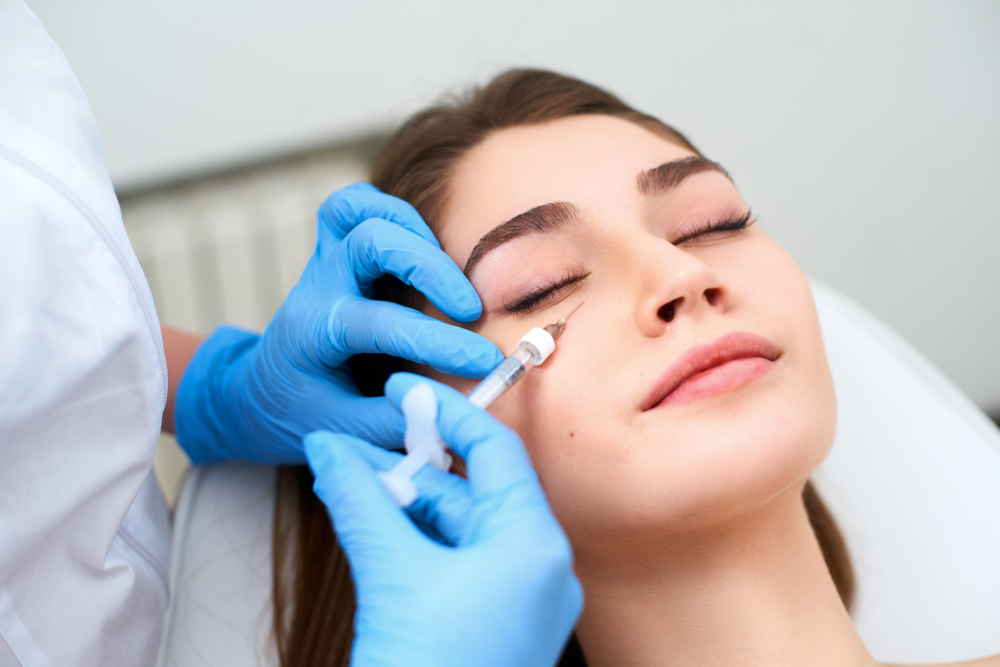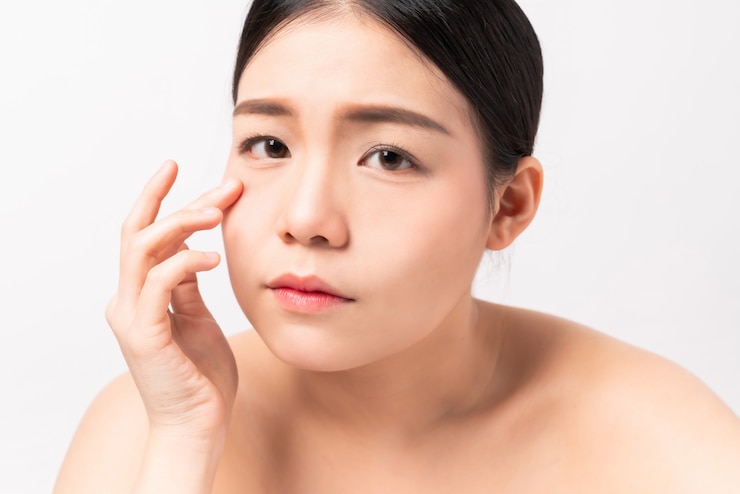Dark circles under the eyes are a common concern for many, often contributing to a tired and aged appearance. While various factors like genetics, lifestyle, and aging contribute to the development of dark circles, under-eye fillers offer an effective, non-surgical solution. By restoring lost volume, Under Eye Fillers in Dubai can help minimize dark shadows, brighten the under-eye area, and improve overall facial aesthetics.
1. Understanding the Causes of Dark Circles
Dark circles can arise from several causes, each affecting how fillers may be used in treatment. Some of the main contributors include:
Volume Loss and Hollowing
As we age, collagen production decreases, leading to thinner skin and a reduction in fat around the eyes. This volume loss creates hollowness that accentuates shadows under the eyes, making dark circles more noticeable. Under-eye fillers can restore volume in these hollow areas, reducing shadows and providing a smoother, more youthful appearance.
Thin Skin and Blood Vessels
The skin under the eyes is thin, and as it loses collagen and elasticity, underlying blood vessels can become more visible, giving a darkened appearance. Fillers not only add volume but also create a slight barrier between the surface of the skin and the blood vessels, reducing the visibility of dark circles.
Genetics and Pigmentation
In some cases, dark circles are hereditary and can result from pigmentation rather than volume loss. While fillers may not directly treat pigmentation, they can create a brighter appearance by reducing shadows and enhancing the overall contour of the under-eye area.

2. How Under-Eye Fillers Reduce Dark Circles
Under-eye fillers, primarily composed of hyaluronic acid (HA), work by filling in the hollows beneath the eyes. When strategically placed, these fillers reduce the shadowing effect that contributes to dark circles. Hyaluronic acid-based fillers are often chosen because they are naturally compatible with the body, hydrating the skin while restoring volume.
By lifting the under-eye area, fillers minimize the depth of shadows, which can result in a brighter, refreshed appearance. HA-based fillers also attract water, further hydrating the skin and improving its overall quality, helping to counteract the thinness that can reveal blood vessels.
3. The Treatment Process for Dark Circles
Step 1: Initial Consultation and Assessment
A qualified practitioner assesses the under-eye area to determine the cause of the dark circles and whether fillers will be effective. They may evaluate skin thickness, the degree of hollowness, and any pigmentation issues. During the consultation, the practitioner explains the treatment plan and expected results, ensuring the patient has realistic expectations.
Step 2: Numbing and Preparation
The under-eye area is cleansed, and a numbing cream is applied to enhance comfort. Some fillers contain lidocaine, which helps to further minimize discomfort during the procedure. The practitioner may use ice packs to reduce the risk of swelling or bruising.
Step 3: Injection of Filler
The filler is carefully injected into the under-eye hollows using a fine needle or a cannula. A cannula is often preferred for its ability to reduce trauma to the delicate tissue and minimize bruising. The practitioner injects the filler strategically, filling in areas of volume loss and adjusting to create an even, natural contour. They may use a small amount of filler initially, as it’s often more effective to build volume gradually.
Step 4: Aftercare and Results
After the treatment, patients may experience mild swelling or bruising, which generally subsides within a few days. The practitioner provides aftercare instructions, which may include avoiding certain activities, like strenuous exercise or excessive sun exposure, for the first 24 hours. Results are often visible immediately, with full effects developing over the next week as the filler settles.
4. Types of Fillers for Dark Circles
The type of filler used can vary based on individual needs and the practitioner’s preference. Commonly used fillers for under-eye treatments include:
Restylane
Restylane is a popular hyaluronic acid filler known for its smooth consistency and natural finish. It integrates well with the skin, making it an ideal choice for the delicate under-eye area, where subtle, soft results are preferred.
Belotero Balance
Belotero Balance is designed for fine lines and areas with thin skin, making it effective for filling shallow hollows and blending seamlessly. Its formulation allows for a soft, even spread, minimizing the risk of lumpiness.
Juvederm Volbella
Juvederm Volbella is another hyaluronic acid filler designed for delicate areas. Its light consistency allows it to provide a gentle lift and subtle volumization, which is suitable for treating dark circles without adding excessive bulk.
5. Benefits of Using Fillers for Dark Circles
Using fillers to treat dark circles offers several advantages over other methods:
Immediate Improvement
Under-eye fillers provide almost instant results, with patients noticing a brighter, smoother appearance shortly after the procedure. This immediate effect is beneficial for those looking for a quick solution to their dark circles.
Minimally Invasive
Compared to surgical options, under-eye fillers are minimally invasive, require no incisions, and involve little to no downtime. Patients can often return to their daily routines soon after the procedure, with only minor aftercare needed.
Long-Lasting but Temporary
Fillers typically last between 6 and 18 months, depending on individual factors and the type of filler used. This temporary duration allows patients to adjust their treatment as their facial structure or aesthetic preferences change over time.
Low Risk and Reversible
Hyaluronic acid fillers are generally low risk and can be dissolved with an enzyme called hyaluronidase if needed. This reversibility provides an added layer of comfort for those trying fillers for the first time.
6. Are Fillers Suitable for All Types of Dark Circles?
While fillers can effectively treat dark circles caused by volume loss and shadowing, they may not be suitable for all types. For example:
- Pigmentation-Related Dark Circles: If the dark circles are primarily due to pigmentation, fillers may not fully address the issue. Alternative treatments like chemical peels, laser therapy, or topical brightening agents might be more appropriate.
- Severe Skin Laxity: In cases where there is significant skin laxity or drooping, fillers alone may not provide sufficient improvement. Some individuals may benefit from a combination of fillers and other treatments like skin tightening or eyelid surgery.
During the consultation, a skilled practitioner can assess these factors and determine the best approach to achieve the desired outcome.
7. Choosing a Qualified Practitioner for Optimal Results
Given the delicate nature of the under-eye area, it’s essential to choose a licensed and experienced practitioner to administer fillers. An experienced professional will understand the unique anatomy of the under-eye region and use precise techniques to ensure even, natural-looking results. They will also have the expertise to address any complications and provide guidance on aftercare.
Working with a qualified practitioner minimizes the risk of side effects and ensures that the treatment is tailored to the individual’s needs, providing optimal and safe results.
8. Complementary Treatments for Enhanced Results
In some cases, combining under-eye fillers with other treatments can provide enhanced results. Some popular complementary treatments include:
Laser Therapy for Pigmentation
For dark circles with a pigmentation component, laser therapy can help reduce melanin production and improve skin tone. When combined with fillers, laser treatments provide a comprehensive approach to dark circles.
Chemical Peels and Microneedling
Chemical peels and microneedling stimulate collagen production, which can improve skin texture and firmness. These treatments work well with fillers to enhance skin quality and reduce the appearance of fine lines.
Topical Brightening Agents
Using topical brightening agents with ingredients like vitamin C or retinol can further improve the appearance of dark circles by reducing pigmentation and enhancing skin radiance.
Conclusion:
Under-eye fillers are a highly effective option for reducing dark circles, especially when caused by volume loss or shadowing. By adding volume to hollowed areas, fillers provide a brighter, refreshed appearance that diminishes the tired look associated with dark circles. When performed by a qualified professional, under-eye fillers offer a safe, minimally invasive way to achieve youthful and natural-looking results. Combining fillers with other treatments can further enhance outcomes, creating a comprehensive approach to under-eye rejuvenation.





Comments